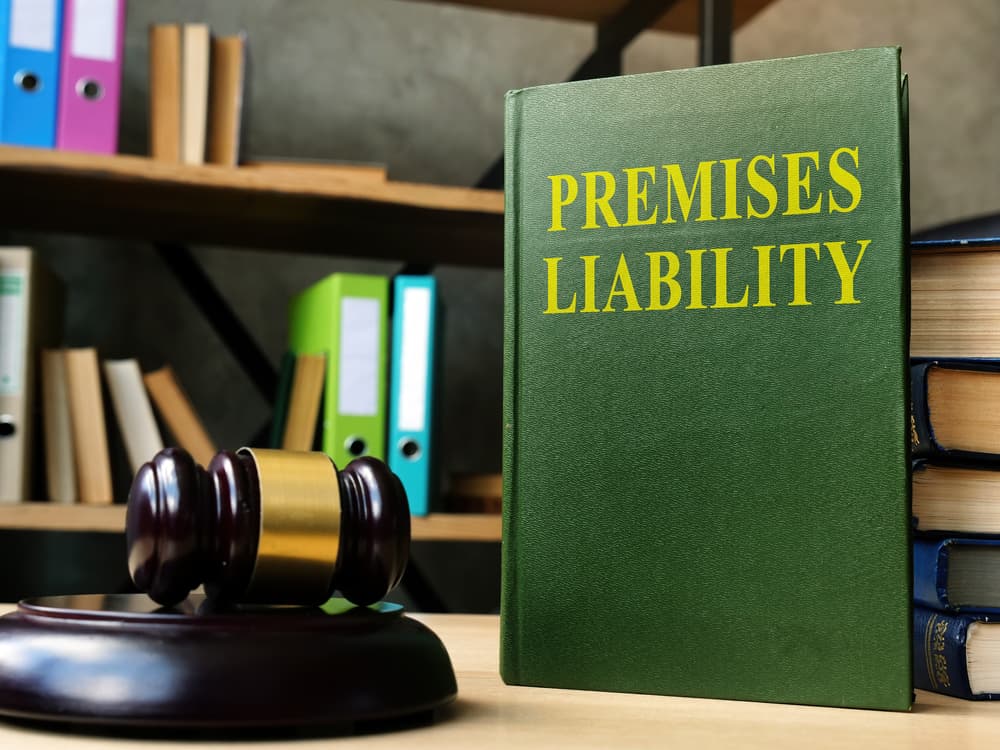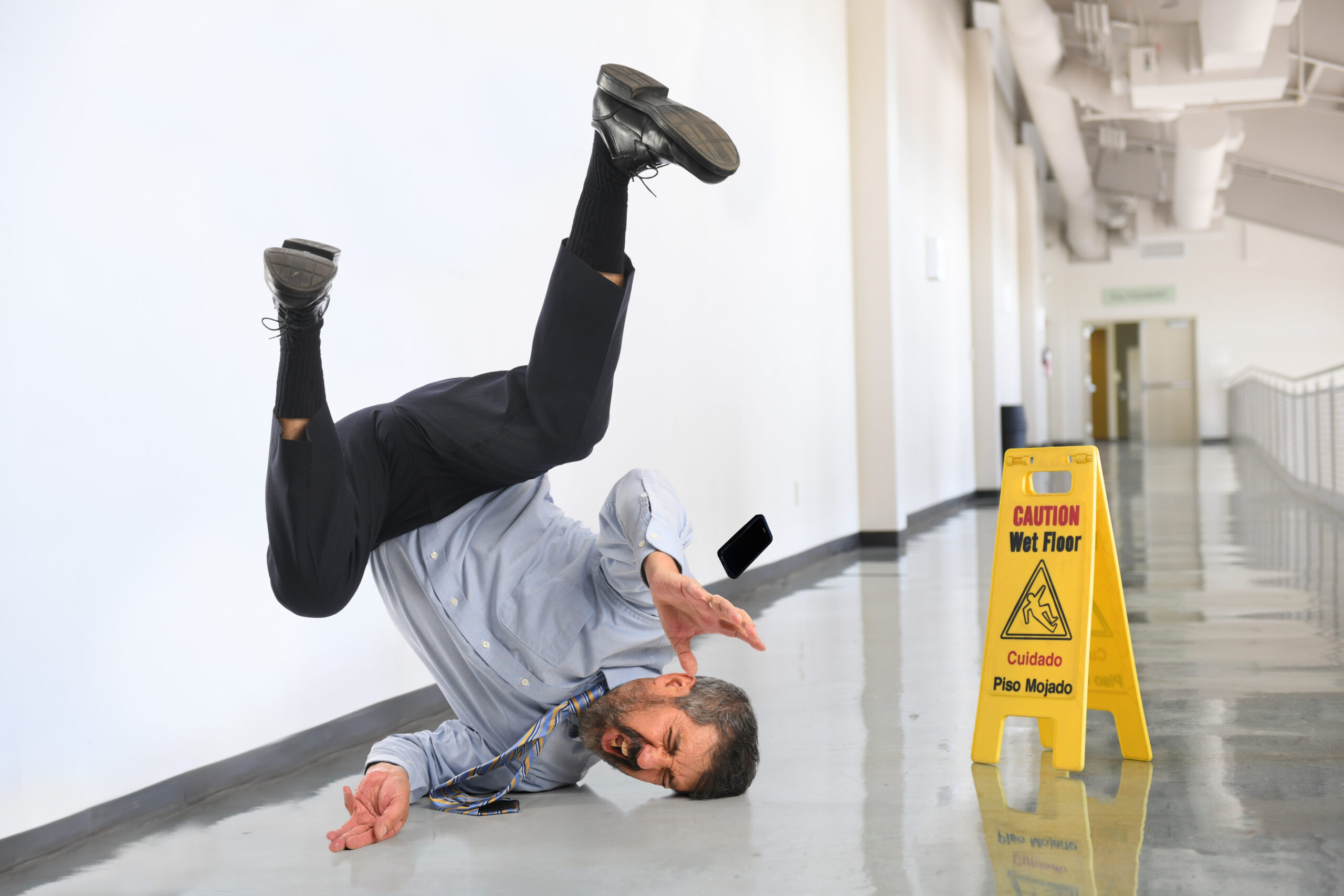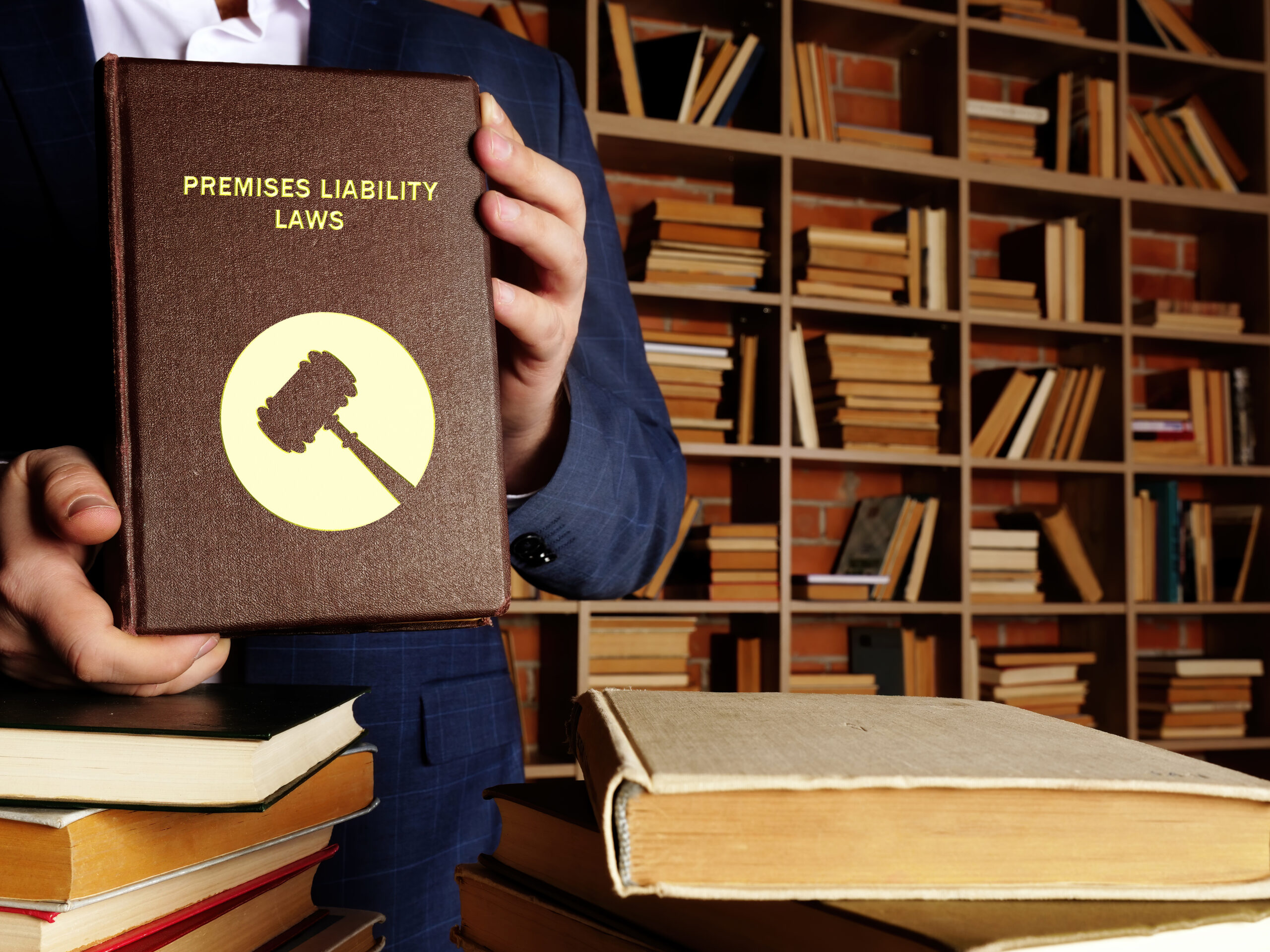While premises liability law encompasses a variety of accidents and incidents, all of them have one thing in common: a person getting hurt due to hazardous or unsafe conditions on someone else’s property. When such accidents happen, the injured person can file a premises liability claim against the property’s owner or occupier (tenant).
This post will explain the legal doctrine of premises liability, review the common types of premises liability accidents, and discuss what you need to know about proving a claim arising from an accident on someone else’s property. A premises liability lawyer will be helpful to decode all legal formalities.
What Is Premises Liability?
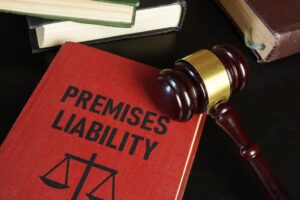
Premises liability is a legal principle that holds property owners accountable for injuries to others that occur on their property due to unsafe conditions. This area of law is significant because it outlines the responsibilities of property owners towards the people who enter their premises and establishes the rights of visitors if they suffer an injury due to owner negligence.
Note: “Negligence” means that the owner failed to act as a reasonable person would under the same circumstances.
At its core, premises liability law determines whether a property owner can be held legally responsible for injuries sustained by others on their property. However, not every injury leads to liability. For a property owner to be held responsible, there typically must be proof that their negligence led to unsafe conditions that caused harm.
The injured party must demonstrate the following elements when pursuing a premises liability claim:
- Duty of care. The owner/occupier of the property owed a legal duty of care to the injured individual – “legal duty” implying standard conduct to prevent foreseeable harm.
- Breach of duty. The owner/occupier failed to uphold their duty by allowing a dangerous condition to exist or not taking reasonable steps to fix it or warn about it.
- Causation. The injured party must have proof showing that the property owner’s breach of duty was the direct cause of the injury.
- Damages. There must be actual damages from the injury (medical bills, lost income, etc.).
Proving these elements can be a complex process involving evidence collection, eyewitness accounts, expert testimony, and a thorough knowledge of state laws and precedents, all of which may require the assistance of a premises liability lawyer.
What’s the Difference Between Personal Liability and Premises Liability?
People often do not realize the difference between personal liability and premises liability. Despite the similar names, these two types of liability claims arise from different causes of action. One basic thing to understand about premises liability is that it does not apply unless someone suffers an injury due to unsafe or hazardous conditions on another party’s property. On the other hand, personal liability holds someone liable for their own actions unrelated to their property.
Let’s review two examples, one for personal liability and one for premises liability:
- Personal liability. You went to a grocery store and ended up being hit by a grocery cart because one of the shoppers was going too fast and was not paying attention to where he was going. As a result of getting hit, you fell and dislocated your shoulder. The shopper can be held personally liable for your injury.
- Premises liability. You went to a grocery store, slipped, and fell in the dairy aisle because someone spilled milk on the floor. You slipped and fell and dislocated your shoulder. As it turns out later, other shoppers complained to the store’s employees about the condition, but they failed to clean or mark it in a reasonable amount of time to prevent accidents. You can hold the store liable under the doctrine of premises liability.
As you can see, these two doctrines are different, but they have one thing in common: you can hold another party liable for your injuries and resulting damages.
Common Types of Premises Liability Accidents
Now that you understand what constitutes premises liability let’s take a closer look at some of the most common types of accidents that fall under the category of “premises liability”:
1. Slip, Trip, and Fall Accidents
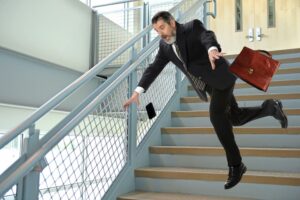
Most premises liability cases involve accidents in which someone slips, trips, and falls. These occur when unexpected hazards like wet floors, loose carpeting, or uneven sidewalks cause someone to lose their footing. If warning signs were absent or the danger was not addressed in a timely manner, the property owner could be held liable.
- Note: Under Florida law, individuals injured on commercial property due to slipping and falling on “transitory foreign substance” must prove the business establishment had actual or constructive knowledge of the condition (Fla. Stat. § 768.0755).
2. Dog Bites and Animal Attacks
When animals on someone’s property inflict harm, the owner might be liable, especially if the animal was known to be dangerous or if insufficient warning was given about its presence. For victims, this can mean dealing with both physical injuries and emotional trauma.
- Fact: Dog bite liability laws differ from one state to another. In Florida, for example, owners of dogs can be held liable when their pets bite people while on public property or when on the dog owner’s private property as long as the victim is on that property lawfully and not trespassing (Fla. Stat. § 767.04).
3. Elevator Accidents
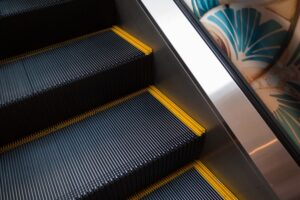
Poorly maintained elevators can lead to severe accidents, and owners are obligated to ensure regular maintenance to prevent such accidents. Accidents can range from falls due to abrupt stops to more dangerous scenarios where passengers are trapped or injured due to mechanical failures.
4. Negligent Security
Property owners must provide reasonable security measures to protect visitors from foreseeable crimes. If a lack of security — such as inadequate lighting, broken locks, or absence of security personnel — leads to an incident, they can be held accountable.
5. Swimming Pool Accidents
Swimming pool owners must adhere to specific safety regulations to prevent accidents. When these are ignored, and injuries occur — from drownings to slips on wet surfaces — the owners may bear responsibility.
6. Hotel Accidents
Hotel visitors expect safety during their stay, but victims can be entitled to compensation under the doctrine of premises liability when accidents happen due to the staff’s negligence or unsafe conditions. Examples include food poisoning, bed bug infestations, or accidents in the lobby or hallway due to poor maintenance.
7. Construction Site Accidents
While construction sites are inherently hazardous, there are strict protocols to safeguard the well-being of passersby and workers. Inadequate signage, unprotected hazards, or falling debris can all lead to injury and potential liability claims.
8. Grocery Store Accidents
Grocery stores are common scenes for premises liability claims, from slip-and-fall injuries caused by spillages to being hit by falling merchandise. Store owners have a duty to keep aisles safe and accessible.
The Duty of Care in Premises Liability Cases

The heart of a premises liability case revolves around duty of care — the property owner’s obligation to maintain a safe environment for visitors. This duty, however, is not absolute and varies based on the visitor’s legal status. Depending on the visitor’s legal status, it can be established whether or not the owner or occupier of the property was negligent in fulfilling their duty of care. Let’s review each legal status individually:
- Invitee. An invitee is a person who has been invited onto the property, either explicitly or implicitly. This can be a customer in a store, a person dining in a restaurant, or a contractor hired to perform work. The property owner owes the highest duty of care to invitees, which includes regularly inspecting and correcting dangerous conditions. The highest duty of care comes from the fact that the property owner gains economic benefit from the invitee’s presence on their property.
- Licensee. A licensee is someone who is on the premises for their own purposes but is present with the owner’s consent — like a social guest. Property owners must warn licensees of any non-obvious dangers of which the owner is aware. The duty of care owed to the licensee is slightly lower than the duty of care owed to the invitee, as property owners are not required to conduct regular inspections of the property, though they are still expected to address or warn licensees of known hazards.
- Trespasser. Trespassers are individuals who enter the property without any right or permission. Typically, property owners owe the lowest duty to trespassers. However, the owner cannot willfully harm trespassers, and they must warn of known, dangerous conditions that can cause serious injury or death. Such warnings may include “beware of the dog” or “electrified fence.”
- Children. Since children do not perceive potential risks as adults do, property owners owe children a special duty of care. Special rules can apply to children under the doctrine known as “attractive nuisance.” Property owners are responsible for taking reasonable steps to prevent child injury if an object or condition on a property is likely to attract children and pose a risk. For this reason, property owners or occupiers may be required to install special safety measures – such as putting up fences to prevent children from entering or installing covers for swimming pools or playgrounds.
If you are unsure what your legal status was when the premises liability accident occurred and what duty of care the owner or occupier of the property owed you, consider speaking with a lawyer.
How Can You Prove Your Premises Liability Accident?
When pursuing a premises liability claim after an accident on someone else’s property, you must prove the following elements:
- Legal status. Were you an invitee, a licensee, or a trespasser on the property? As discussed earlier, establishing this will determine the extent of care the property owner owes to you.
- Purpose of visit. The reason for your visit – personal, business-related, or simply as a passing pedestrian – also affects your case. Each scenario comes with differing expectations and responsibilities.
- Common areas vs. restricted areas. Where did the incident occur on the property? The liability may vary depending on whether the accident took place in a common area intended for public use or in an off-limits area where proper signage should have been in place.
- Awareness of your presence. A property owner or manager’s knowledge of your presence can influence the establishment of a duty of care. Knowing that guests or customers were on the premises can imply an obligation for adequate safety measures.
- Nature of hazard. Identify and document the nature of the hazard that caused the accident. Whether it was a wet floor without signage, an uneven sidewalk, or any other precarious condition, it is essential to determine the specifics of the hazard in question.
- Previous incidents. Providing evidence of previous incidents similar to yours can strengthen your claim, particularly if it demonstrates a pattern of negligence on the owner’s part.
- Building codes and regulations. Understanding relevant local building codes and regulations is crucial. Violations of these codes can become compelling proof of negligence in your case.
- Communications and warnings. Were there any warnings of potential hazards? Communicating dangers through proper signage or verbal warnings is often legally required to ensure the safety of visitors.
Consider getting help from a premises liability lawyer to help prove the above-mentioned elements and ensure you get the compensation you are entitled to.
Foreseeability of Harm in Premises Liability Accidents
In premises liability law, foreseeability of harm plays a pivotal role. Foreseeability pertains to a property owner’s ability to predict or anticipate that their negligence can lead to an accident. In legal terms, it’s a standard used to establish whether the owner was aware, or should reasonably have been, that their action or inaction can cause harm.
Several factors come into play when determining foreseeability:
- History of similar incidents. Have similar accidents occurred on the property before?
- Obviousness of the hazard. Is the danger clear and recognizable?
- Duration of the hazard’s presence. How long has the hazard been present before the accident occurred?
Consider a case where a customer slips and falls due to a spill at the grocery store. The harm might be deemed foreseeable if the spill was left unattended for hours without any warning signs. On the other hand, if another customer caused the spill seconds before the fall, the store might successfully argue that the harm was not foreseeable — they had no reasonable time to react and address the hazard.

For victims of accidents, proving foreseeability can profoundly affect their ability to seek compensation. If victims show that the property owner could have foreseen the potential harm and did nothing to prevent it, they stand a stronger chance of succeeding in their legal claims. Establishing foreseeability often requires gathering evidence that supports negligence, such as camera footage, maintenance records, or eyewitness accounts. A skilled Spring Hill personal injury attorney can help you gather the necessary evidence to prove the foreseeability of harm and hold the property owner liable.

